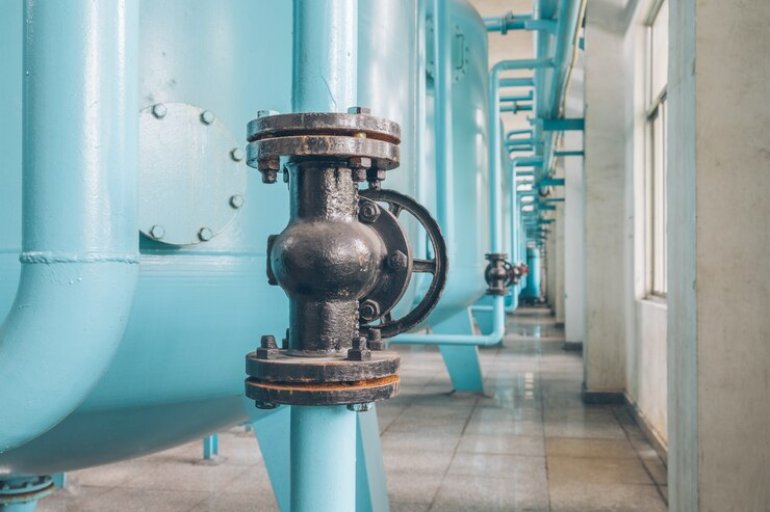Environmental Impact of Industrial Valves: How to Improve Sustainability

Introduction:
In an era where environmental consciousness is at the forefront of global
discussions, industries across the spectrum are reevaluating their practices
to minimize their ecological footprint. One often overlooked aspect of
industrial processes is the role of valves and their impact on the
environment. Industrial valves, despite being essential components in
various manufacturing and processing systems, can contribute significantly
to environmental degradation. In this blog post, we will explore the
environmental impact of industrial valves and discuss strategies to improve
their sustainability.
The Environmental Impact of Industrial Valves:
1. Material Selection:
One of the primary contributors to the environmental impact of industrial
valves is the choice of materials. Traditional valve materials such as
carbon steel and cast iron often involve resource-intensive extraction and
manufacturing processes, leading to higher carbon emissions. To enhance
sustainability, industries should consider using eco-friendly materials like
recycled metals or alloys with a lower environmental impact.
2. Energy Consumption:
The operation of industrial valves is energy-intensive, especially in
large-scale manufacturing plants. High energy consumption not only
contributes to increased operating costs but also raises the carbon
footprint of the facility. Employing energy-efficient valve designs, such as
those incorporating smart technologies or advanced materials that require
less force for operation, can significantly reduce energy consumption and
enhance sustainability.
3. Emission Reduction:
Many industrial processes involve the transportation or processing of
hazardous substances. Valves play a crucial role in controlling these
substances, and the release of emissions during valve operation can pose a
threat to the environment. Implementing advanced emission control
technologies, such as low-leakage valve designs and regular maintenance
protocols, can help mitigate the environmental impact of valve emissions.
4. Waste Management:
The manufacturing and maintenance of industrial valves generate a
considerable amount of waste, including unused materials and worn-out
components. Sustainable waste management practices, such as recycling and
reusing materials, can significantly reduce the environmental impact of
valve production and maintenance processes.
5. Water Conservation:
Certain industries heavily rely on water for their processes, and valves
play a crucial role in regulating water flow. Implementing water-efficient
valve designs and incorporating smart water management systems can help
industries minimize their water usage, contributing to overall environmental
sustainability.
Strategies to Improve Sustainability:
1. Lifecycle Assessments:
Conducting thorough lifecycle assessments of industrial valves can provide
valuable insights into their environmental impact. By analyzing the entire
lifecycle, from raw material extraction to disposal, industries can identify
specific areas for improvement and implement targeted sustainability
measures.
2. Research and Development:
Investing in research and development is crucial for developing innovative
and sustainable valve technologies. This includes exploring alternative
materials, improving energy efficiency, and creating valves with extended
lifespans to reduce the frequency of replacements.
3. Regulatory Compliance:
Adhering to environmental regulations and standards is essential for
industries seeking to improve sustainability. Compliance ensures that valves
meet or exceed environmental requirements, reducing the overall
environmental impact of industrial processes.
4. Training and Education:
Proper training and education of personnel involved in the selection,
operation, and maintenance of industrial valves are paramount. Educated
personnel are more likely to make environmentally conscious decisions and
follow sustainable practices, leading to a reduced environmental impact.
5. Collaboration and Certification:
Collaboration between industry stakeholders, environmental organizations,
and regulatory bodies can foster the development of sustainable practices.
Seeking certifications from recognized environmental bodies can also
demonstrate a commitment to sustainability and responsible environmental
stewardship.
Conclusion:
In the pursuit of a more sustainable industrial landscape, addressing the
environmental impact of every component is essential. Industrial valves,
often underestimated in their role, are integral to ensuring the efficiency
and safety of operations. By implementing sustainable practices such as
material selection, energy efficiency, emission reduction, waste management,
and water conservation, industries can significantly reduce the
environmental footprint of their valve-related processes.
In this journey towards sustainability, the choice of a reliable and
environmentally conscious valve manufacturing company is crucial. Oswal Industries Limited stands out as a beacon of excellence in this regard.
Committed to innovation and environmental responsibility, Oswal Industries
Limited has demonstrated a dedication to producing valves that not only meet
industry standards but also adhere to stringent environmental regulations.
Their focus on research and development, coupled with a commitment to using
eco-friendly materials and energy-efficient technologies, makes them a
leader in sustainable valve manufacturing.
As industries continue to evolve, it is partnerships with companies that will drive positive change. Through
collaborative efforts, adherence to environmental standards, and a
collective commitment to sustainability, the industrial landscape can
transition towards practices that not only ensure operational efficiency but
also safeguard the health of our planet. Choosing the right valve
manufacturing company is not just a business decision; it is a step towards
a greener and more sustainable future.
